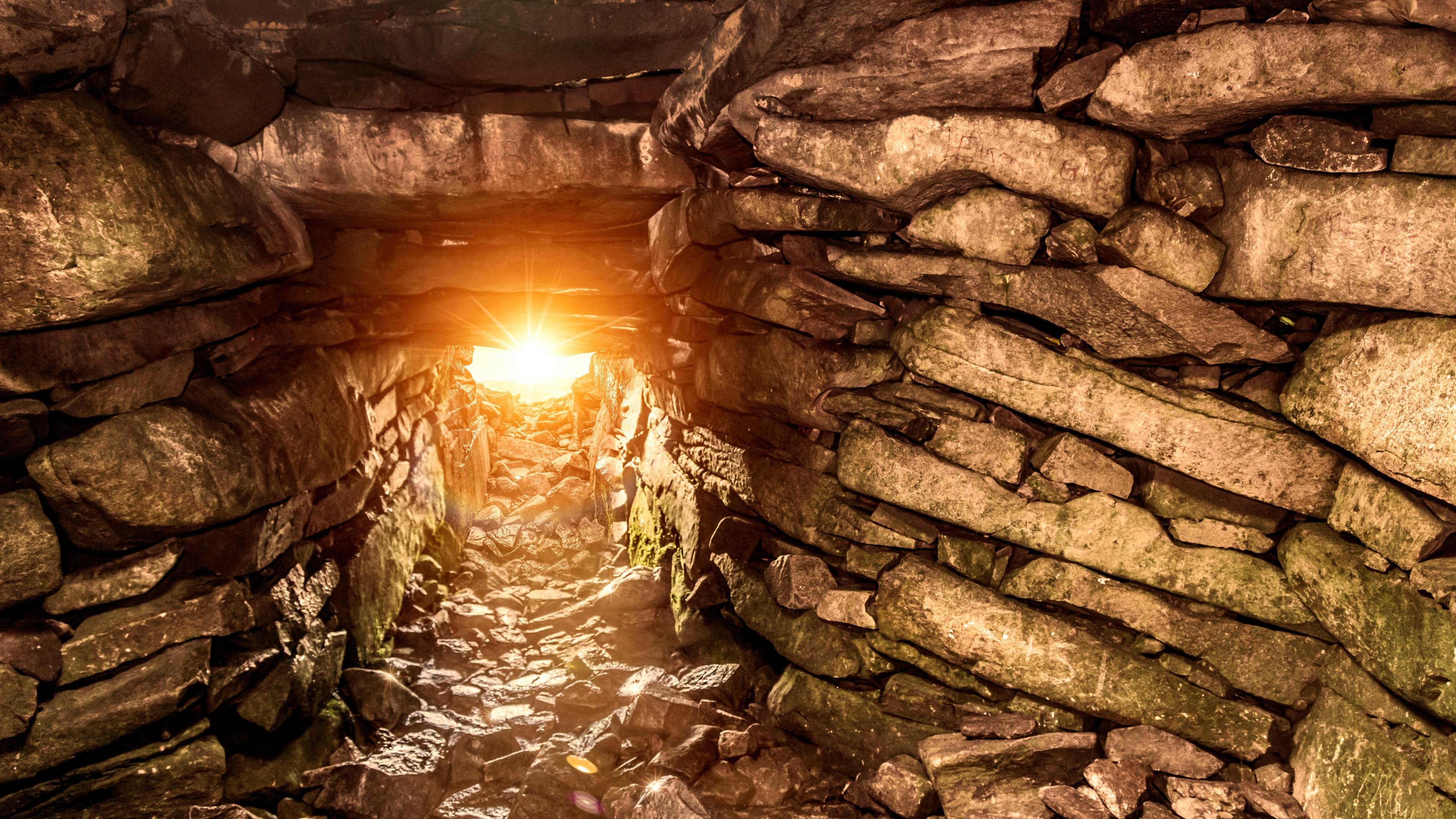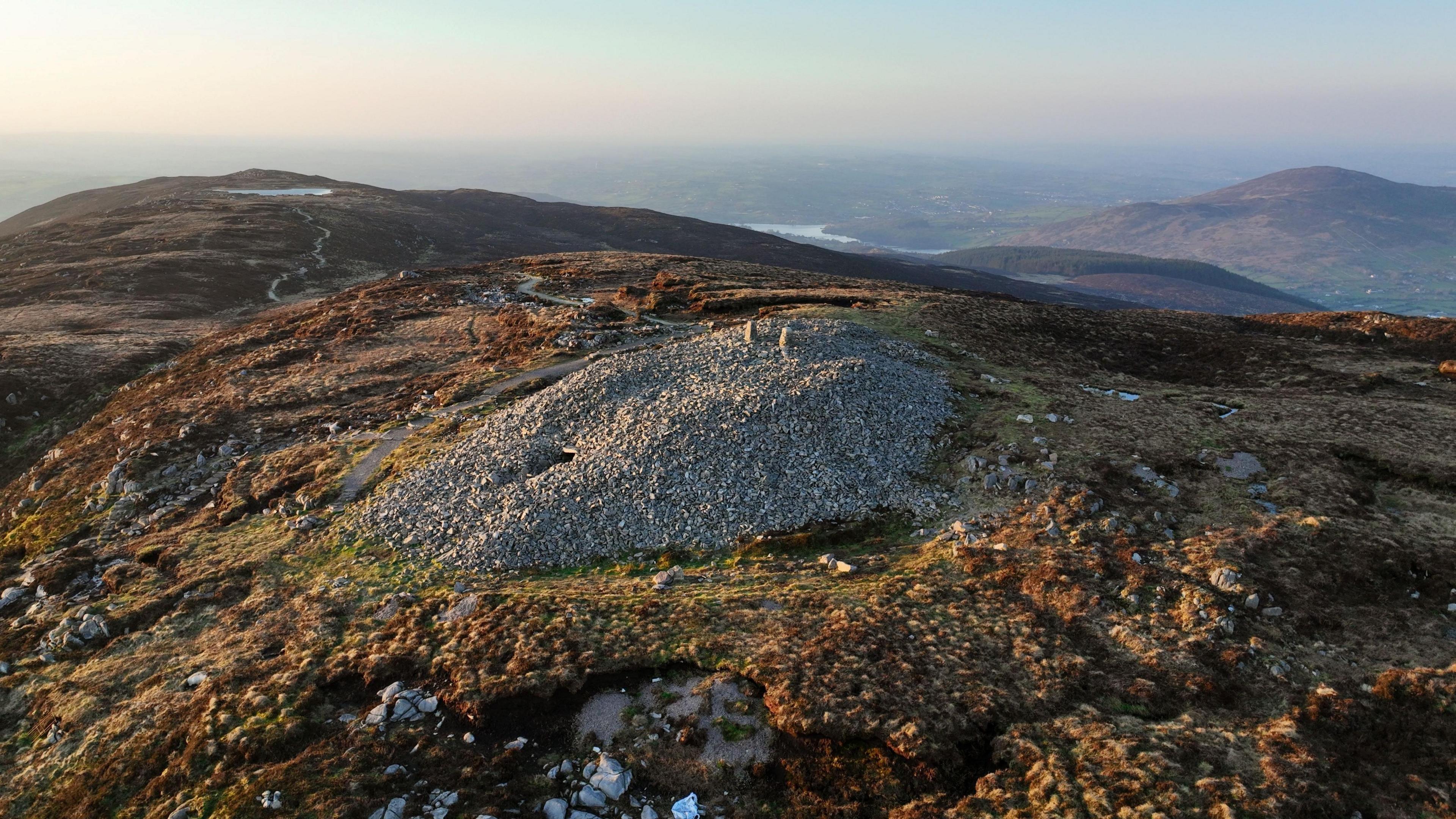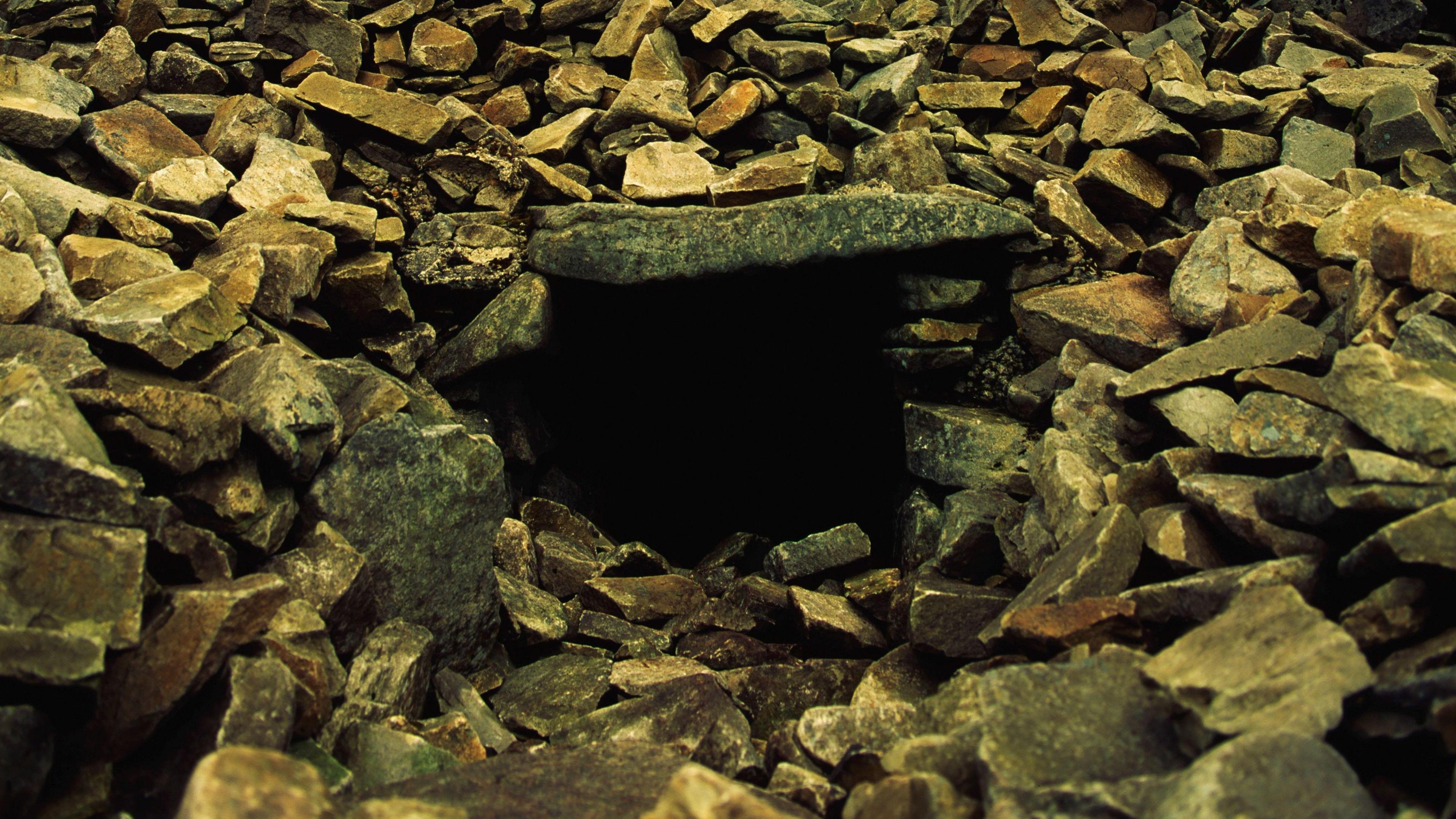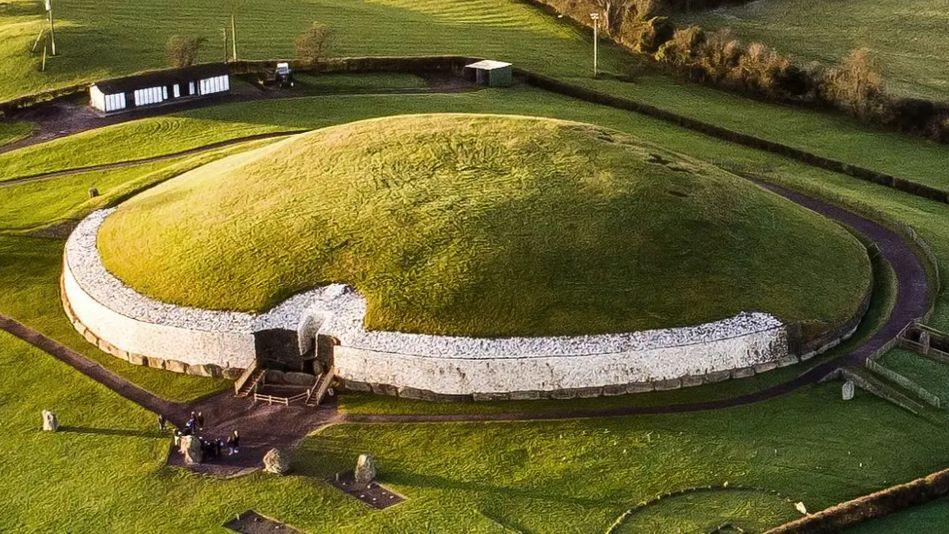How the solstice shines light on 5,000 years of history

Slieve Gulllion is home to the highest surviving passage tomb in Ireland
- Published
If Newgrange is for early risers, then Slieve Gullion, in County Armagh, is for those who like a sleep in – provided they don't mind hiking to the top of a mountain.
Either way the winter solstice is the time both of these historical and mythical passage tombs come into their own.
A passage tomb is a burial chamber usually set within a circular mound that is accessible via a passage – those at Newgrange and Slieve Gullion are estimated to be about 5,000 years old., external
At Newgrange, in County Meath, it's the rising solstice sun that illuminates the famous chamber – in Cailleach Beara's house on top of Slieve Gullion, external, it's the setting sun.
'Built in alignment with the sun'
Winter solstice shining new light on Slieve Gullion history - pictured is Kevin Murphy
The winter solstice marks the shortest day and longest night of the year.
This celestial event, occurring annually on 21 or 22 December, signals the sun's "rebirth" as daylight hours gradually begin to lengthen.
The winter solstice has been celebrated for thousands of years, most notably at Newgrange, but also at Slieve Gullion.
Set at an altitude of more than 570m, Slieve Gulllion is home to the highest surviving passage tomb in Northern Ireland.
To the passing eye it might look like a massive pile of rocks but a small entrance on the south-west side indicates something much more remarkable.
Historian Kevin Murphy said the tomb had survived not just the passage of time but also human disregard for its importance.
"It was built in alignment with the sun," he said.
"So whenever the setting sun comes along on the winter solstice it goes to the back of the chamber.
"It goes back to the two stones at the back. It shaves them but it doesn't touch them. These people were very much in touch with nature and the setting sun."

The burial chamber is lined up to illuminate with the light from the setting sun on 21 December every year
"In about 1892 along came a clergyman called 'Red' Father (Luke) Donnellan – not for his politics but for the colour of his hair," he explained.
"He decided to excavate it and he blew the top off it with dynamite. He died before I could get my hands on him," he added.
"The British Army also built a number of foxholes in it and threw a lot of the stones back into the chamber but, nevertheless, it is still there."

The ancient passage tomb only allows sunlight in at sunset on the winter solstice
Changeable weather on top of the mountain often limits the effect of the solstice.
'You can't really describe the feeling'
Meditation coach Ann Ward grew up beside the mountain and takes groups on activities including forest bathing.
She said the people who built the tomb were connected to nature.
"It was a place to honour their dead. And they used a mountain formed over 60 million years ago to do that.
"They built it stone by stone to create this incredible cairn with the sun that they worshiped streaming through on the winter solstice.
"So the precision and engineering used to align the sun to honour the dead was an incredible thing.
"The solstice means literally light standing still.
"So you are in this very small space with a group of people who are waiting, waiting, waiting on the stillness of the sunlight coming in at around five past four and you are connected with your ancestors – you can't really describe the feeling."

Meditation coach Ann Ward says celebrating the solstice makes you feel "connected with your ancestors"
The prehistoric passage tomb at Newgrange is older than the Egyptian pyramids, having been built in about 3200 BC.
It aligns perfectly with the rising sun on the winter solstice.
A beam of sunlight illuminates the tomb's chamber for a few minutes as dozens of people gather to witness the sight - weather permitting, of course.
"This monument was engineered 5,000 years ago, and 5,000 years later it really has stood the test of time" Leontia Lenehan from the Brú na Bóinne Visitor Centre told BBC News NI.
"It is so well designed that it's in perfect alignment - the sun enters through an opening above the door, marking the end of the shortest day and the journey towards the longest day."

Newgrange is older than the Egyptian pyramids
When is the solstice?
On the solstice, the sun rises at 08:44 GMT and sets at 15:59 in Belfast, offering seven hours and 15 minutes of daylight.
By 1 January, the days will lengthen to seven hours and 23 minutes and by February the island will enjoy closer to nine hours of sunlight.
The gradual shift to longer days is due to the Earth tilting on its axis more directly toward the sun.
The longest day of the year is traditionally marked on the summer solstice which will occur in 2025 on 21 June.
This article was updated on 8 January 2025.